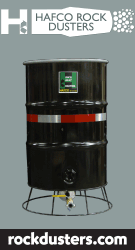Mid-Atlantic Ports Benefit from 2017 Coal Export Revival
Nearly 20 ships were anchored off Cape Charles early last week — most, if not all, of them colliers waiting to pick up coal destined for ports all over the world.
Just a couple of years ago, you might have seen only a few vessels at a time in the same location.
Not anymore. They’re back.
Hampton Roads is the biggest coal-exporting port in the country. Baltimore is right behind it. And they’re both in the vanguard of what appears to be a U.S. coal-export revival.
Between 2016 and 2017, coal exports from Hampton Roads have surged by 58.8 percent, according to data from Norfolk-based T. Parker Host Inc., the largest ship agent in the nation for vessels carrying dry-bulk cargoes.
Baltimore saw a 42.8 percent increase.
All three of Hampton Roads’ coal terminals — Norfolk Southern Corp.‘s Pier 6 at Lamberts Point, and Kinder Morgan’s Pier IX and Dominion Terminal Associates, both in Newport News - reported significant spikes last year from the year before, led by DTA with a 71.2 percent increase in exports.
Lamberts Point saw a 55.7 percent gain and Pier IX was up 46.1 percent.
“I think, if anything, the story has sort of solidified,” said Jim Thompson, Knoxville, Tenn.-based senior director of U.S. coal for IHS Markit, a global research firm, in an interview last week. “I think strong exports are baked in at least through the first half of the year.”
It wasn’t that long ago that coal exports in the port had tanked.
As recently as 2013, Hampton Roads exported nearly 50 million tons of coal - the most since 1992, according to T. Parker Host.
After that, the business slid: to 41.1 million tons in 2014, then to 26.7 million tons in 2015 - a 35 percent drop; then to nearly 22 million tons in 2016, a 17.7 percent decline.
The dramatic turnaround is attributable to “a couple of things that kind of coalesced,” said Elias Johnson, an energy analyst with the Washington, D.C.-based U.S. Energy Information Administration.
At the end of 2016, mining companies that had gone into bankruptcy began to re-emerge, lightened after having sold off assets and written off a lot of debt, making production costs lower, Johnson said.
Also, companies that weren’t traditionally in the coal-mining business suddenly found themselves owning mines; they were able to begin producing coal at lower costs because they hadn’t assumed any debt, he added.
Those companies and the U.S. coal industry at large were also helped by a cyclone that hit Australia early last year, affecting production in a country that historically does a lot of business in the Asian coal market.
The result was that demand for both “metallurgical” or “met” coal, used in steelmaking, and steam or “thermal” coal, which is used in electrical power plants, took off.
“Suddenly, U.S. coal became more attractive in the export market,” Johnson said.
Historically, a sliver of the coal moving out of Hampton Roads - 2 percent or less - was barged to utility plants on the East Coast.
The rest is exported and much of it is high-quality metallurgical coal from Central Appalachia, hauled to the port by Norfolk Southern and CSX Corp. trains.
Last year, all of the coal that moved through the port was exported.
Through the first half of 2017, Hampton Roads accounted for a little more than half of U.S. “met” coal exports nationwide, according to EIA figures.
Combined with Baltimore, the two ports shipped nearly three-quarters of the nation’s total met-coal exports from January through June of last year, the most recent EIA data available on its website.
The EIA, which is still processing 2017 numbers, estimates that total U.S. coal exports last year were 95 million tons, with thermal coal accounting for 41 million tons, or about 43 percent of the total.
The agency projects that total U.S. met-coal exports will be more than 50 million tons this year and next, but that thermal-coal exports will slip by 34 percent this year and by 15 percent in 2019.
Total U.S. coal exports this year are expected to be 80 million tons and 75 million tons in 2019.
The EIA sees met-coal exports staying strong through this year and next, “but with market conditions returning to normal, thermal-coal exports will find it harder to compete with Australia and Indonesia, which are much closer to the Asian markets,” Johnson said.
The U.S. coal-export market is strong right now, Thompson said: “The second half of the year - you know, put it this way - I don’t see any reason that it will decline.”
In the first half of 2017, met-coal accounted for 85 percent of Hampton Roads’ exports, with steam coal making up the balance.
The U.S. met-coal market is strong and solid, limited only by the availability of coal and rail service, Thompson said. The steam coal side of the equation is trickier, he added, which turns on a push-pull dynamic.
The push is that the domestic demand for U.S. steam coal is weak, driven largely by the energy market’s turn to cheaper natural gas. The pull is that Europe and other parts of the world, once they get a taste of U.S. coal, find they like it.
This is particularly true of Central Appalachian coal, Hampton Roads’ stock in trade, which is a very strong metallurgical coal and an attractive thermal coal as well, Thompson said.
“You have a very desirable product,” he added.
Further enhancing Hampton Roads’ coal on the world market are the consistency and reliability of its facilities.
“If I want a boat out of Hampton Roads, I can get it,” Thompson said. “They’re not going to fall off; they’re not going to fail. ... They’re going to perform.”
To what extent has President Donald Trump’s policies driven coal’s rebound?
“The Trump factor is probably, you know, mostly the impact of the administration’s policies on the economy,” Thompson said. “To the extent that you believe that’s positive, it’s positive for coal.”
Yet, bottom-line, he believes that the dominant reason for coal’s resurgence is tied to the bigger world picture.
“I have to say that I truly believe market forces, primarily, are at work,” he concluded.
Source: Associated Press
Be in-the-know when you’re on-the-go!
FREE eNews delivery service to your email twice-weekly. With a focus on lead-driven news, our news service will help you develop new business contacts on an on-going basis.
CLICK HERE to register your email address.























